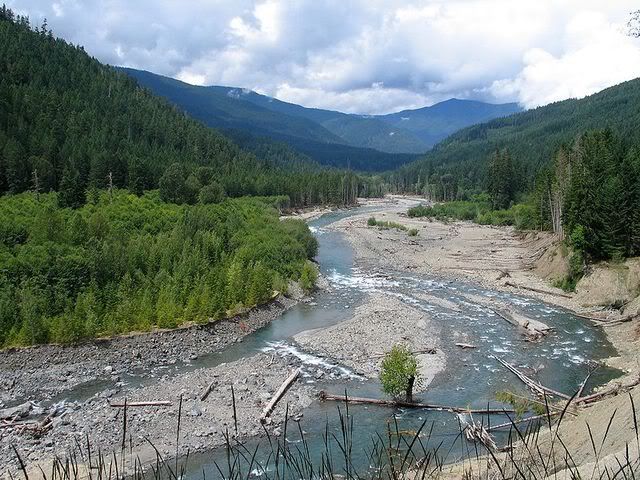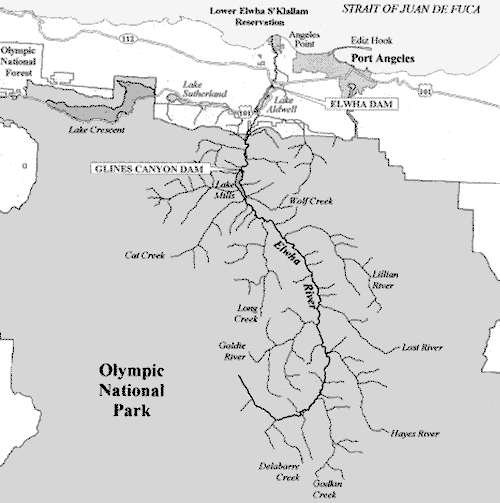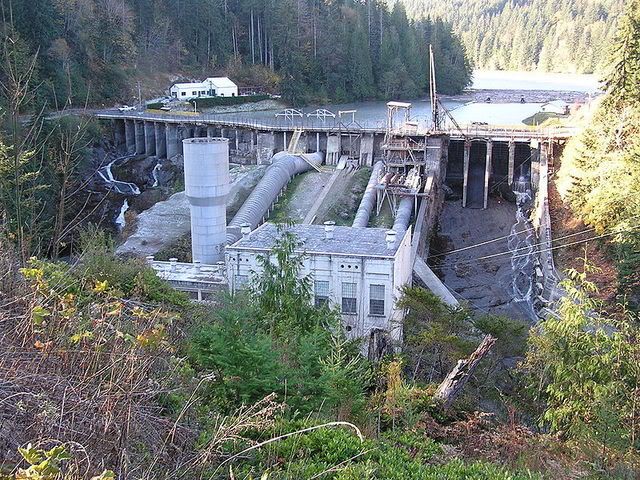( – promoted by navajo)
The Elwha River originates in the mountains of what is now the Olympic National Park in Washington. Long before the coming of the Europeans, there were bountiful salmon runs on the Elwha River which were important to the economy of the Klallam people. The Elwha River supported annual runs of 250,000 to 500,000 fish, including cutthroat trout, Dolly Varden, coho, sturgeon, steelhead, sockeye, and pink salmon. Some salmon weighed more than 100 pounds. While the river is short-only 45 miles long-it was the only river in the Pacific Northwest to contain all five species of Pacific salmon.


Fish were important to the ecology of the area. There were more than 20 different species of fish and animals which fed directly on the river’s salmon. In addition, the spawned out carcasses of the anadromous fish provided tons of natural fertilizer for the vegetation along the river.
For the Klallam people, the salmon were more than just a source of calories: they were also an important part of their religion. The salmon, therefore, were treated with special reverence and a ceremony was held at the first catch to honor the salmon and to encourage its abundance.
In 1855 the Lower Elwha Klallam Tribe signed the Treaty of Point No Point with the United States. In this treaty, the tribe retains the right to fish the Elwha River in perpetuity.
In 1910 construction began on the Elwha Dam. The construction of the dam ignored both the Klallam people and state law which required fish runs. In 1913 when the dam became operational, the Klallam people watched in horror as thousands of migrating fish died at the base of the 108′ high dam. By blocking the fish passage to their spawning grounds, the dam effectively negated the tribe’s treaty rights.

In 1927 a second dam, the Glines Canyon Dam, was constructed on the Elwha River. By this time the fish runs were gone. The two dams on the river also had consequences for the shellfish. With the two dams, the natural downstream movement of gravel and nutrients was stopped. As a result, the broad sandy beaches at the mouth of the river, once prime shellfish beds, were washed away because of the lack of replenishing materials from upstream.
The two dams did more than destroy a traditional fishing area: they also flooded numerous areas of spiritual significance for the Lower Elwha Klallam people. Included in the flooded area is the creation site for the Elwha people.
In 1989 the Lower Elwha Klallam passed a resolution calling for the removal of dams on the Elwha River. The resolution noted that the dams have destroyed the anadromous fishery which had been the tribe’s most valuable resource. They also noted that the dams impede the passage of sediments which are needed to maintain the reservation’s beaches.
In 1992 Congress authorized the federal government to acquire and then remove the two Elwha River Dams. This decision to remove the dams was met with outrage and opposition, often expressed in anti-Indian racist terms. After several years of delay, the Department of the Interior officially acquired the two dams from the private owners in 2000.
The dismantling of the dams is scheduled to being in 2011 and the dams should be gone by 2014. By 2039, the river should be replenished to its pre-dam levels. The National Park Service, which is in charge of the project, estimates that the salmon run should increase from 3,000 to over 400,000. Tribal elders and biologists hope that this will mean the eventual return of 100 pound salmon to the river.
Leave a Reply